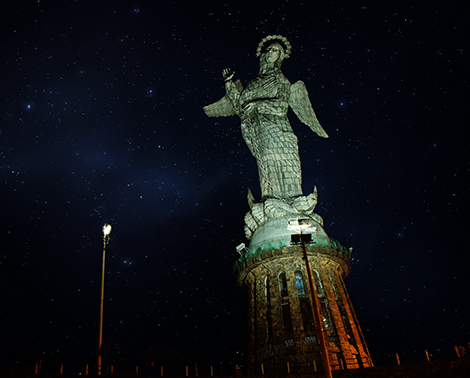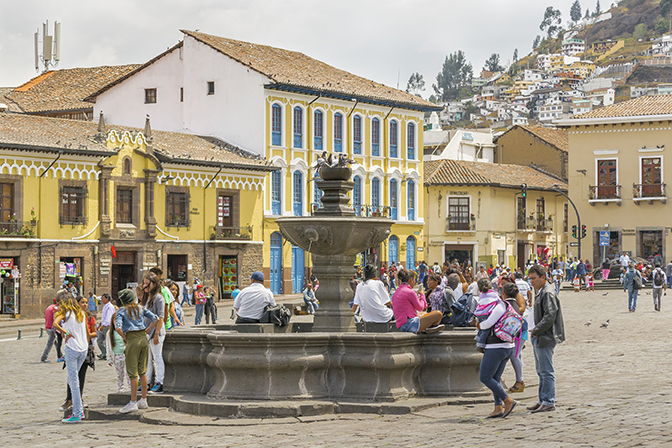QUITO - It’s 3 a.m. — touch down at last! The first thing I notice when I step out of Quito’s airport is that the air is remarkably crisp. It’s a certain kind of crisp that leaves you feeling invigorated — this is what you get when you’re standing 2,850 metres above sea lev- el.
As I leave the airport, what I think to be stars twinkling high above the airport are actually lights lining the mountains — life is truly lived on the edge for those huddled on the jagged peaks that encircle Quito.
When the sun rises, you begin to realize you’re living amongst the clouds. Sometimes, you can even touch them. On clear days the views are breathtaking — the snowcapped Andean peaks, the picturesque plazas, the concrete homes lined up neatly along the slopes. Standing on a terrace and looking out on this beauty is a humbling experience.
When you descend from the city’s highest point, you drive through lively streets jammed with traffic and vibrant market stands before eventually arriving at the jewel of Quito — Old Town.
A UNESCO World Heritage Site, Quito’s Old Town looks different from others in South America. Home to a number of architectural treasures and colonial monuments, the streets here narrow and vendors are lined up on the busiest street corners. Cobblestone pathways lead to charming plazas that remind me of Europe. The most magnificent features of Old Town are its colonial religious buildings — 40 chapels and churches along with 16 convents and monasteries are wedged into this small space.
Old Town is a desirable destination for visitors because it showcases lots of European and Indigenous art, which is featured in the many citadels that lie within the Old Town plazas.


Left: Night view of Virgen de El Panecillo or Virgen de Legarda. Right: Urban day scene with lots of people at San Francisco square located in the historic center of Quito in Ecuador.
As you walk through the Old Town, you can sense its history — it feels as though you’re walking through a different era. Even the horse-drawn carriages that line the handsome streets offer a glimpse into Quito’s colonial past.
As if the elegance and charm of the Old Town isn’t enough, I discover Vista Hermosa Café Mirador, which sits atop one of the highest buildings in the historic sector. The name of the café translates directly to “Beautiful View” and it truly offers one of the most spectacular views of Quito, especially the Old Town.
In the evening, when all the mountains sparkle with light, I look out from the Southern edge of Vista Hermosa and see La Virgen del Panecillo (the statue of the Virgin of Quito) — the city’s guardian that stands majestically overlooking Quito from its perch on Panecillo Hill (known locally as Bread Loaf Hill).
Quito is also home to the Mitad del Mundo, (aka “the middle of the world”). Because the Equator (hence the country’s name) slices through Ecuador’s centre, a monument is fixed on the precise location that marks the dividing line between the Southern and Northern hemispheres. Bucketlisters love to straddle the imaginary line — stepping back and forth between hemispheres like a child skipping rope.
And who cares if studies have shown that the monument is imprecisely situated, and that astronomers were wrong about the exact coordinates of where the equatorial line passes through. The story of the Mitad del Mundo still makes the monument appealing to many tourists and it’s still the most popular tourist site in Quito.
For whatever reason (hint: the proximity of the Galapagos Islands), Quito has always been a city overlooked by travellers. With its colonial influence, unique situation, splendid views and some if the kindest people you can meet, it’s surely not one to be missed. In fact, you haven’t lived until you’ve seen Quito, with all it has to offer.